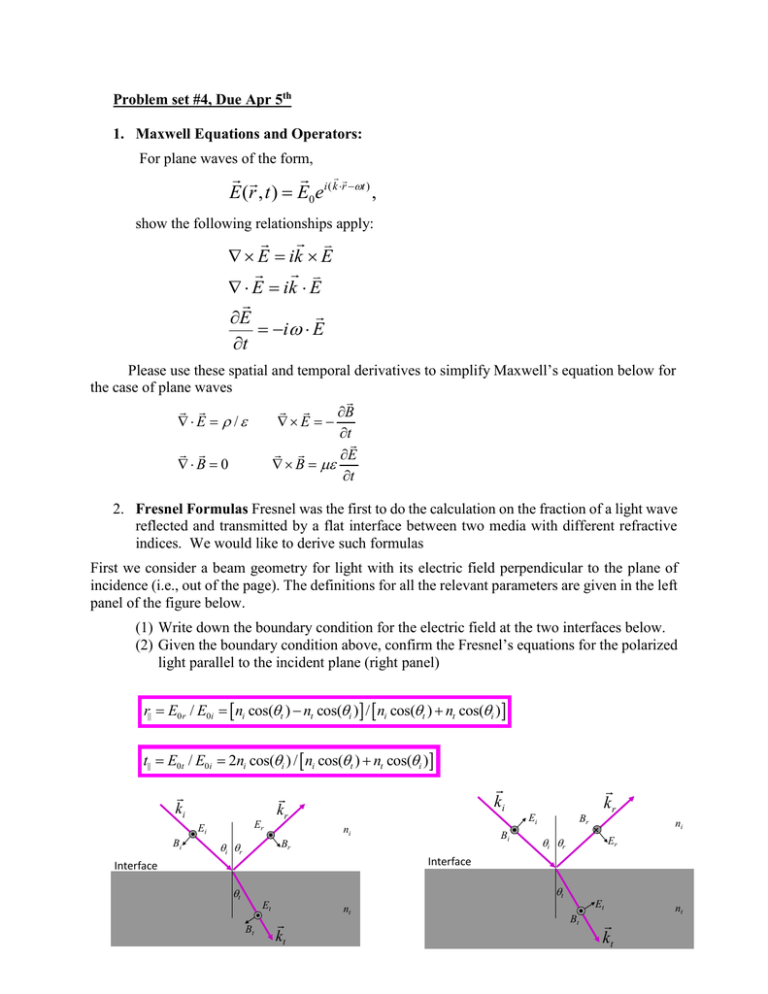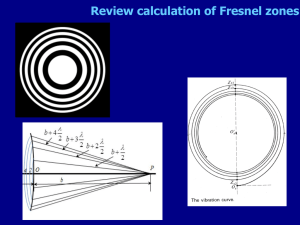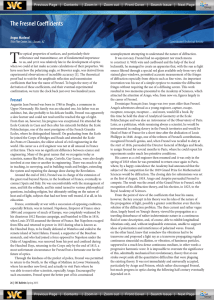, )
advertisement

Problem set #4, Due Apr 5th 1. Maxwell Equations and Operators: For plane waves of the form, i ( kr t ) E (r , t ) E0e , show the following relationships apply: E ik E E ik E E i E t Please use these spatial and temporal derivatives to simplify Maxwell’s equation below for the case of plane waves B t E B t E / E B 0 2. Fresnel Formulas Fresnel was the first to do the calculation on the fraction of a light wave reflected and transmitted by a flat interface between two media with different refractive indices. We would like to derive such formulas First we consider a beam geometry for light with its electric field perpendicular to the plane of incidence (i.e., out of the page). The definitions for all the relevant parameters are given in the left panel of the figure below. (1) Write down the boundary condition for the electric field at the two interfaces below. (2) Given the boundary condition above, confirm the Fresnel’s equations for the polarized light parallel to the incident plane (right panel) r|| E0 r / E0i ni cos(t ) nt cos(i ) / ni cos(t ) nt cos(i ) t|| E0t / E0i 2ni cos(i ) / ni cos(t ) nt cos(i ) ki Er Ei Bi ki kr ni Bi Br i r kr Ei Br ni i r Er Interface Interface t t Et Bt nt kt Et Bt kt nt 3. We consider a beam geometry for light with its electric field parallel to the plane of incidence (i.e., in the page). The definitions for all the relevant parameters are given in the right panel of the figure above. (1) Calculate the reflection & transmission coefficients. (2) Let’s define ni = 1(air) and nt = 1.5 (glass), plot the above reflection & transmission coefficients as function of incident angle θi from 0 to 90 degrees for an Air-to-Glass Interface. It will be ideal to use a graphic software to do the plotting (any software is fine). If you decide to do it with hand, you are required to at least sample 20 points for θi from 0 to 90 degrees.






